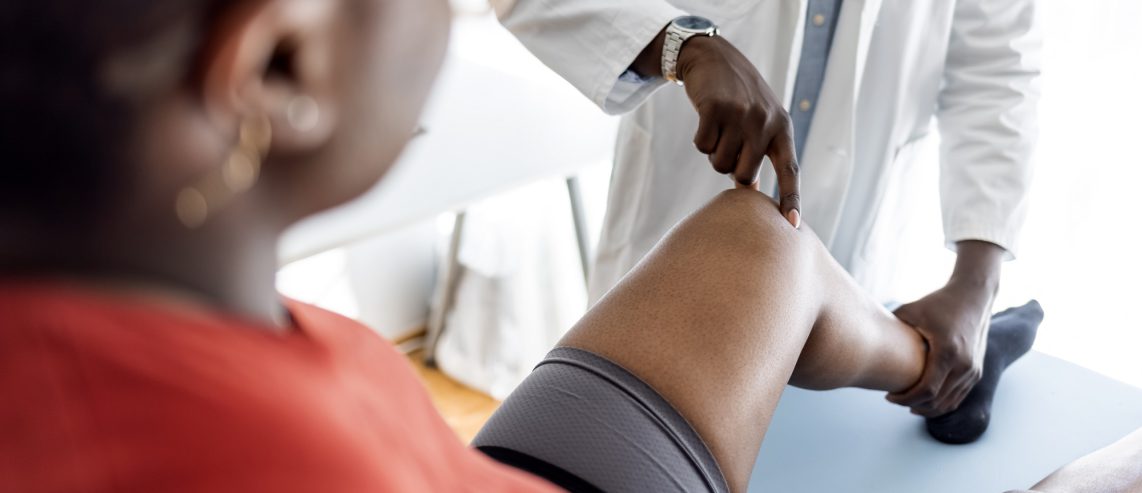Bone spurs — also known as osteophytes — affect your bones and joints.
Bone spurs can form in almost any joint in your body. They’re more common as you age or if you have osteoarthritis.
What Are the Symptoms of Bone Spurs?
Bone spurs or osteophytes are bony growths that form in the joints or in the spine. They cause damage to bones, muscles, or tendons — often as a result of osteoarthritis. However, these smooth growths usually don’t cause pain.
Bone spurs are more common as you age. About 80% of men and 60% of women over the age of 50 have osteophytes. By age 70, 95% of both men and women have bone spurs.
How do people diagnose bone spurs?
People often learn they have a bone spur only after having an x-ray for some other health issue. That’s because many people with bone spurs don’t have symptoms at all.
What do bone spurs feel like?
The word “spur” makes them sound painful, but bone spurs are actually small, smooth bumps. They may not cause any symptoms unless they start to press on a nerve or tendon.
What joints do bone spurs affect?
If a bone spur presses on a nerve or tendon, it can affect your:
- Fingers, making it hard to bend or move them.
- Heel or foot, causing discomfort or pain.
- Hip, making it hard to move your hip.
- Knee, making it hard to straighten your leg.
- Shoulder, causing damage to the rotator cuff, a group of muscles and tendons that let you move your shoulder.
- Spine, causing weakness or loss of feeling in your arms and legs.
Some people may need surgery for bone spurs, but most can treat them with less invasive methods.
Never Miss a Beat!
Subscribe to Our HealthBeat Newsletter!
Thank you for subscribing!
You can now select the specific newsletters you'd like to receive.
You are already subscribed.
Subscribe to more newsletters in our email preference center.
Sorry, an error occurred. Please try again later.
Get Healthy Tips Sent to Your Phone!
What Causes Bone Spurs?
Degenerative diseases or health issues — such as osteoarthritis or tendonitis — can cause osteophytes or bone spurs. Joint damage from osteoarthritis is the most common cause.
Osteoarthritis breaks down the cartilage that cushions the ends of your bones. Your body then tries to repair the damage by creating a new bone in that area. The swelling stimulates cells that form bone, which in time grows into an osteophyte.
For example, a bone spur in the foot is common. When the Achilles tendon gets inflamed, a bone spur can form on the back of the heel, called the calcaneus bone. Activities such as running or dancing also can lead to the growth of bone spurs.
How Serious Are Bone Spurs?
Rarely, a health problem present at birth — called a congenital condition — will cause bone spurs.
The biggest risk factor for bone spurs is age.
Getting bone spurs as you get older is normal. Genetics may also play a role. Having a parent whose bone spurs caused pain can mean you’re more likely to get them.
Most people can cope with bone spurs by using medications or adaptive aids. However, some bone spurs will press on nerves and other parts of the body and cause pain.
Bone spurs can make movement painful. If you don’t treat them, the pain will likely only get worse. In that case, you may need surgery.
How to Get Rid of Bone Spurs
Treatment for painful bone spurs may include exercise, physical therapy, anti-inflammatory medications, cortisone injections, and custom-made orthotics. If these first-line treatments don’t relieve your pain, you might need surgery.
Contact UPMC Orthopaedic Care
To request an appointment or for additional information, please call 1-833-307-2842 or submit a form online.
About UPMC
Headquartered in Pittsburgh, UPMC is a world-renowned health care provider and insurer. We operate 40 hospitals and 800 doctors’ offices and outpatient centers, with locations throughout Pennsylvania, Maryland, New York, West Virginia, and internationally. We employ 4,900 physicians, and we are leaders in clinical care, groundbreaking research, and treatment breakthroughs. U.S. News & World Report consistently ranks UPMC Presbyterian Shadyside as one of the nation’s best hospitals in many specialties and ranks UPMC Children’s Hospital of Pittsburgh on its Honor Roll of America’s Best Children’s Hospitals. We are dedicated to providing Life Changing Medicine to our communities.
